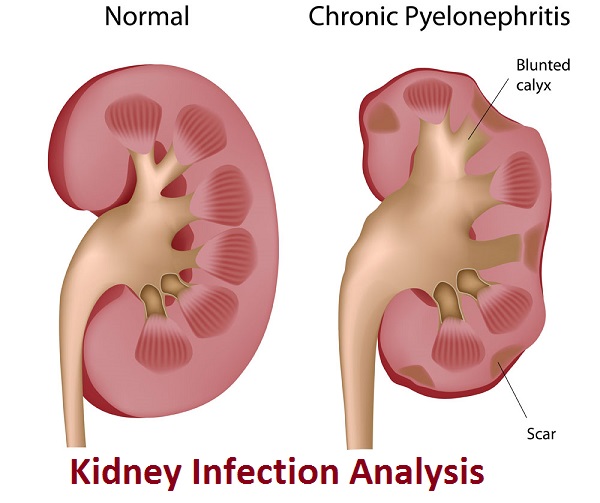A human body cannot be imagined without kidneys. They are vital parts of our body which is responsible for flushing out the wastes and surplus liquids through urine. Although there are several types of kidney infection but Pyelonephritis is the most common among them. The infection starts with the bladder – a part of urinary system that stores urine before being released. Kidney infections are of two types – acute and chronic. Chronic infection often leads kidney failure.
The infection of kidney is a part of urinary track infection under which entire urinary system gets affected. It is harder to combat compared to any disease like diabetes and cancer, growth of prostate or kidney stones etc. Sometimes finding the cause is also difficult as the causes of infections can be from various sources, like internal tubes to catheters. However, the major reason is that bacteria travel through the urinary system to the kidneys and start growing.
The associated symptoms also vary with patients. Nausea, fever, back aches, pain during urination are the most common symptoms found. The treatment is done most commonly with antibiotic. But sometimes in special cases many other medicines are used after several related test. In case of kidney infection without proper treatment curing it from root is not possible. Though symptoms might get lost but they might not be up rooted. In the case of kidney infection sometimes the ureter is blocked. Then doctors are left with no other choice but the surgery.
Medicines for this infection vary with the stage of disease. Doctors also suggest a special diet to keep it in control. Drinking plenty of liquid is recommended along with quitting alcohol and cigars. Following the guidelines of doctor is very important to get rid of this disease.
Kidney infection is analysed in many ways, one of them is intravenous pyelogram. It is an x-ray exam to identify the existence of infection in kidney. Cystoscopy is another form of diagnosis which is done with the help of cystoscope – a thin tube hooked with a camera is put in the urethra up into the bladder. This process also helps to know if there is any existence or not of a kidney stone.
The instructions given by the doctor must be followed even if patient feels better. If the patient is hospitalised and get relieved he must not leave drinking plenty of liquid, and should continue the treatment till end. Besides, once the treatment is over one should forget to get himself examined to ensure that kidney infection is completely cured.
